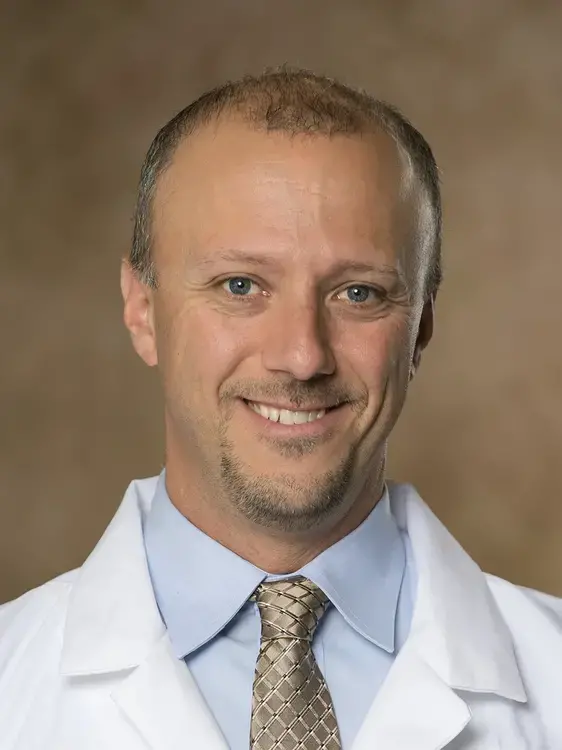Michael Pallaci, DO, FACEP, FACOEP
Professor of Emergency Medicine, NEOMED, OUHCOM, Vice Chair for Faculty and Resident Development, Summa Health System

Michael Pallaci, DO, FACEP, FACOEP, is a Professor of Emergency Medicine at Northeast Ohio Medical University and a Clinical Professor of Emergency Medicine at Ohio University Heritage College of Osteopathic Medicine. He currently serves as Vice Chair for Faculty and Resident Development at Summa Health System in Akron, OH where he is also Medical Director for the Virtual Care Simulation Lab and Director for the Simulation Medicine Fellowship, as well as core faculty for the USACS EM Residency.
Over the course of his 24-year career in EM (15 in academics), he has worked in EDs with volumes ranging from 6,000 to 85,000 per year in urban and rural areas, in community and academic institutions, and has served as program director for two EM residencies. He has given lectures and published podcasts and articles in all areas of EM, including at the ACOEP Scientific Assembly and on the EM:RAP platform. He has published in textbooks and multiple medical journals, and presented at multiple regional, national, and international conferences on numerous topics, including medical education, chest pain, pain management, gender bias, documentation, wellness, medicolegal issues, emergency ultrasound, hypertension, and others.
- Review the evidence and guidelines regarding the management of hypertensive non-emergencies in the ED
- Discuss the lack of utility of using the antiquated term “Hypertensive Urgency”
- Show that acute treatment of hypertensive non-emergencies has no potential for benefit with significant potential for harm
- Discuss the practical application of this information in the ED
- Discuss the most current evidence regarding the demographics and risk of patients presenting to the ED with chest pain
- Define and explore the relevance of the chest pain lexicon including STEMI/NSTEMI, ACS, MACE, CRACE and others
- Emphasize the importance of multi-modal pain management
- Explore the numerous non-opioid options available for ED pain management
- Review optimal opioid drug selection, dosing, and the pharmacokinetics of opioid agents
- Introduce the concept of red flag diagnosis in uncommon but high morbidity diagnoses in patients with common chief complaints
- Demonstrate the benefits to both patient care and medicolegal protection when red flag documentation templates are used
- Discuss the history of EST by reviewing the landmark studies and current guidelines
- Explore the strengths and weaknesses of the supporting literature for EST, including the possibility of indication creep
- Discuss the societal cost of stroke in comparison to the cost of implementing broad reaching stroke protocols
- Discuss the evolution of medical presentations in the context of generational preferences
- Explore options to power point lectures for residency didactics
- Learn to optimize your presentations based on your audience
- Learn to apply adult learning research to optimize study time
- Learn strategies to optimize performance on standardized multiple choice tests including EM boards
- Define antibiotic stewardship and how it impacts patient care
- Discuss the evidence behind specific high-yield examples where these concepts can be practically applied
- Provide practical tools to improve charting for all three audiences that we chart for (colleagues, billers/coders, and juries/lawyers)
- Introduce techniques for charting that can improve efficiency as well as productivity and medicolegal protection
- Discuss the pros and cons of various templates, how they can lead to dangerous inaccuracies, and how they can be used safely and effectively
- Provide an in-depth explanation of a suggested approach to management of patients with epistaxis
- Become familiar with various types of equipment and medications available to treat epistaxis
- Give a detailed description of the red flags and injury patterns that suggest (and that do not suggest) NAT
- Provide some suggestions for scripts to use in conversations when NAT is a possibility
- Discuss the rationale and evidence behind recommendations to avoid some commonly prescribed medications
- Provide better alternatives for when these medications are being considered
- Discuss the evidence behind the recently released ACEP clinical policy on this topic and explore the guideline in detail
- Provide specific tools to safely provide this effective treatment to patients
- Discuss the differences between limited point of care ultrasound performed by emergency physicians and comprehensive studies performed in the department of radiology
- Give an overview of the 12 applications currently considered primary indications
- Discuss common injury patterns in children with upper body injuries
- Provide practical tools to use when evaluating children with upper body injuries
- Explore the strength of the evidence supporting the common practice of using alpha blockers to promote stone passage
- Discuss specific clinical scenarios including optimal decision making and potentially difficult conversations with consultants
- Give an introduction to the structure and purpose of ACGME
- Demystify some of the ACGME acronyms and requirements for residency core faculty
- Define different types of scholarly activity and what is required of core faculty
- Define the core competencies and the milestones that we use to evaluate them
- Define what the various milestone levels mean (and do not mean)
- Discuss the three audiences addressed with charting and how to optimize charting for each of them
- Increase the quality of charting without sacrificing reimbursement or medico-legal protection
- Share tips and tricks to improve efficiency on shift
Want Michael Pallaci as a speaker at your next event?
Fill out this form with more information and we get back to you with more information.